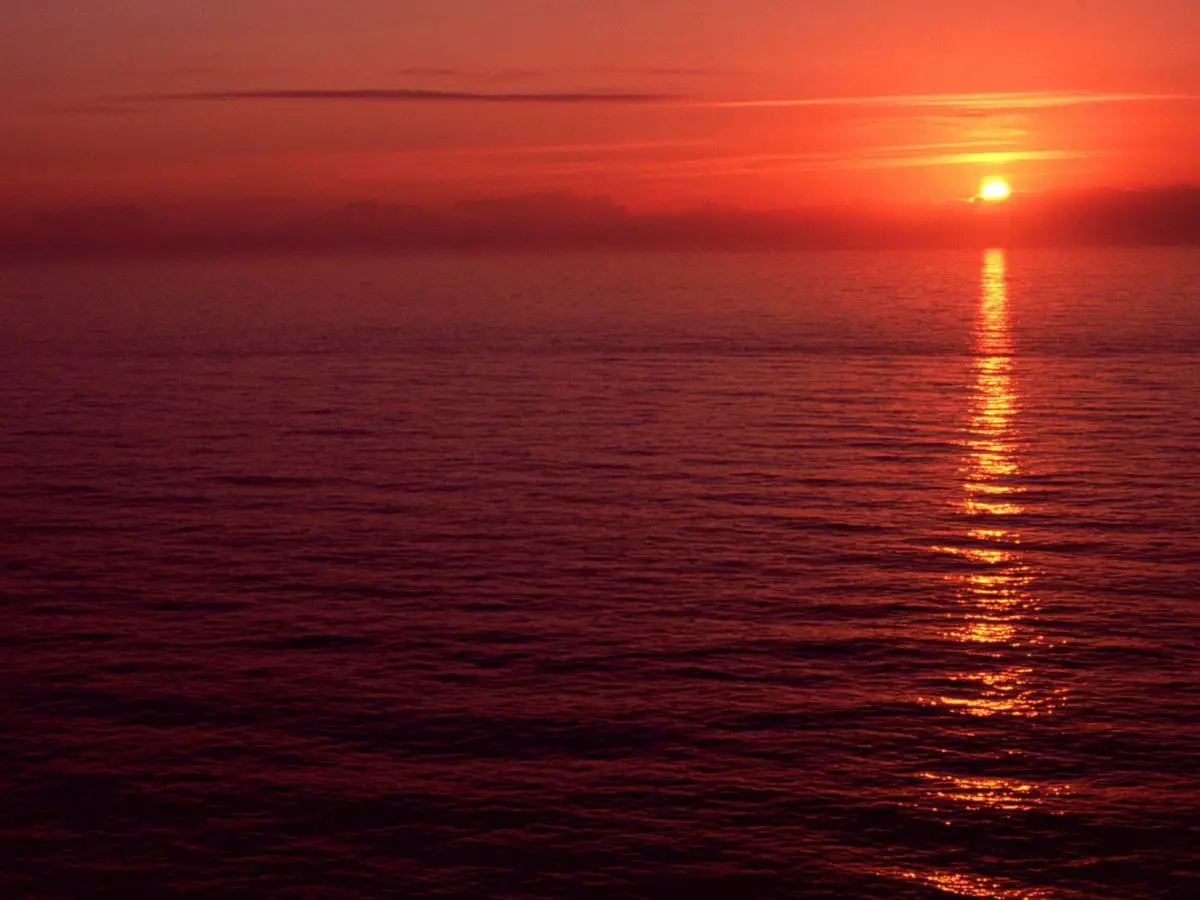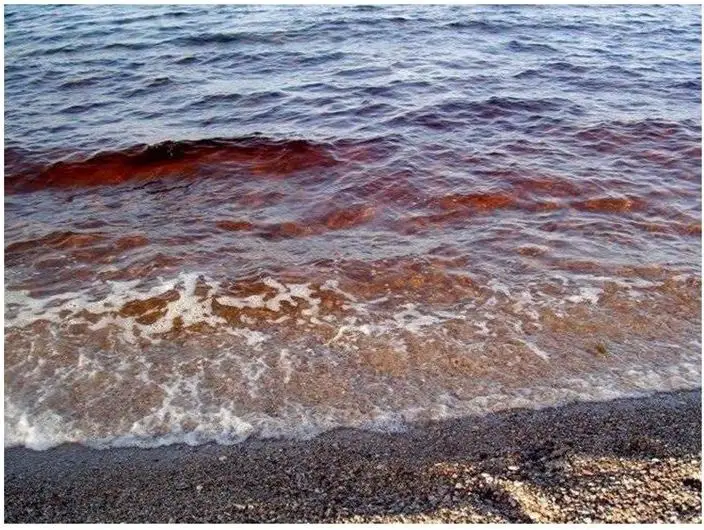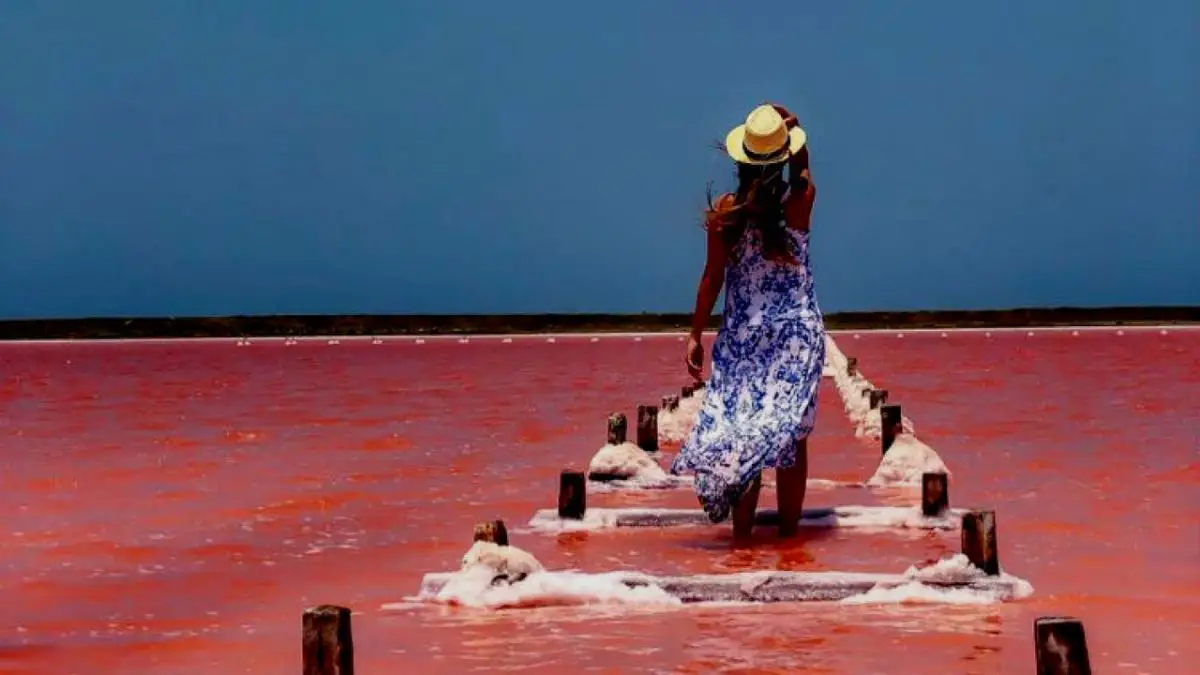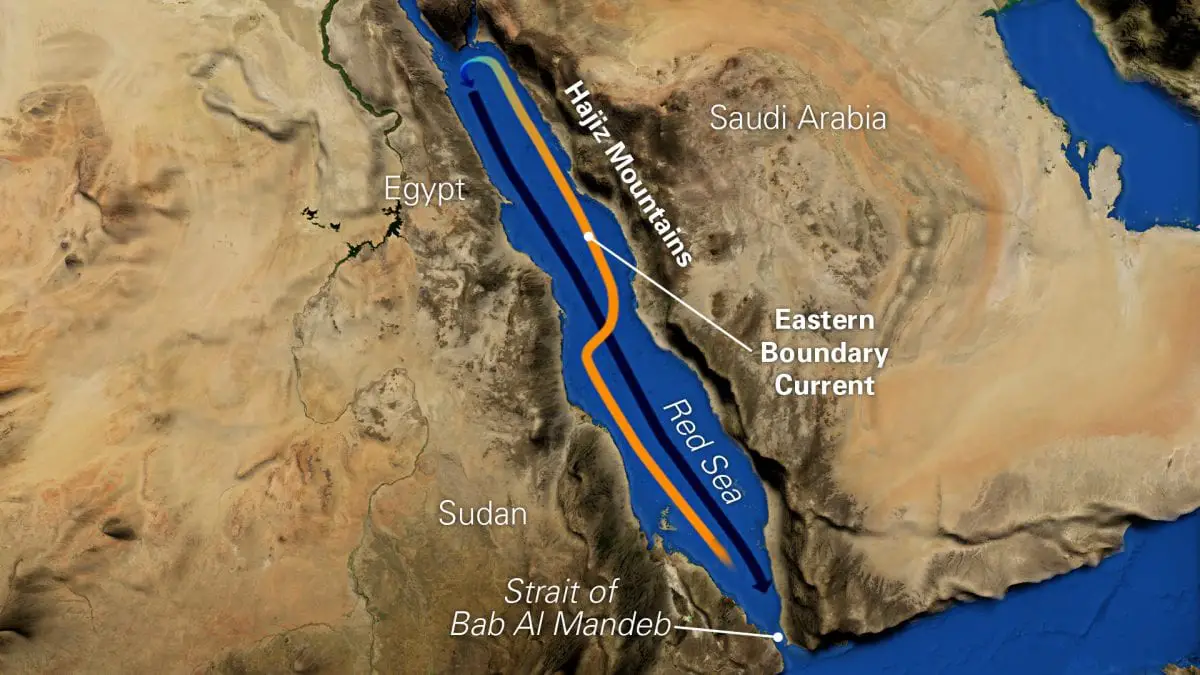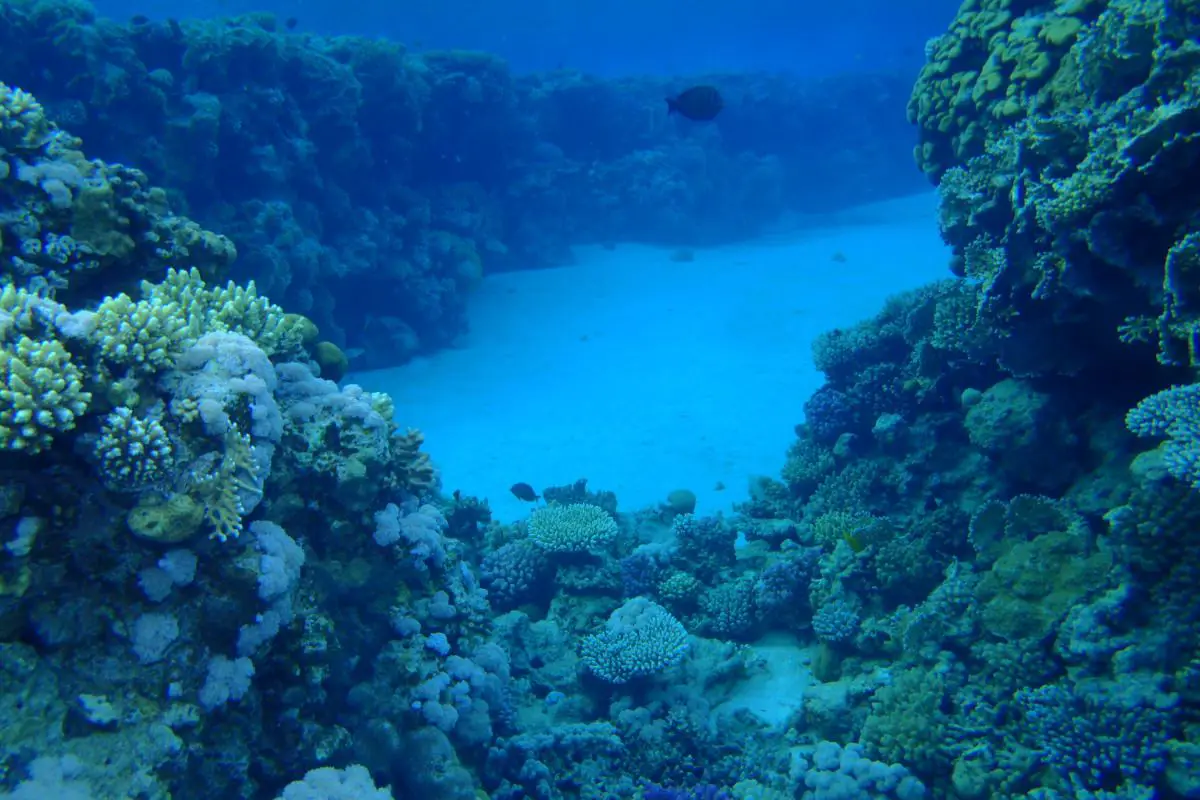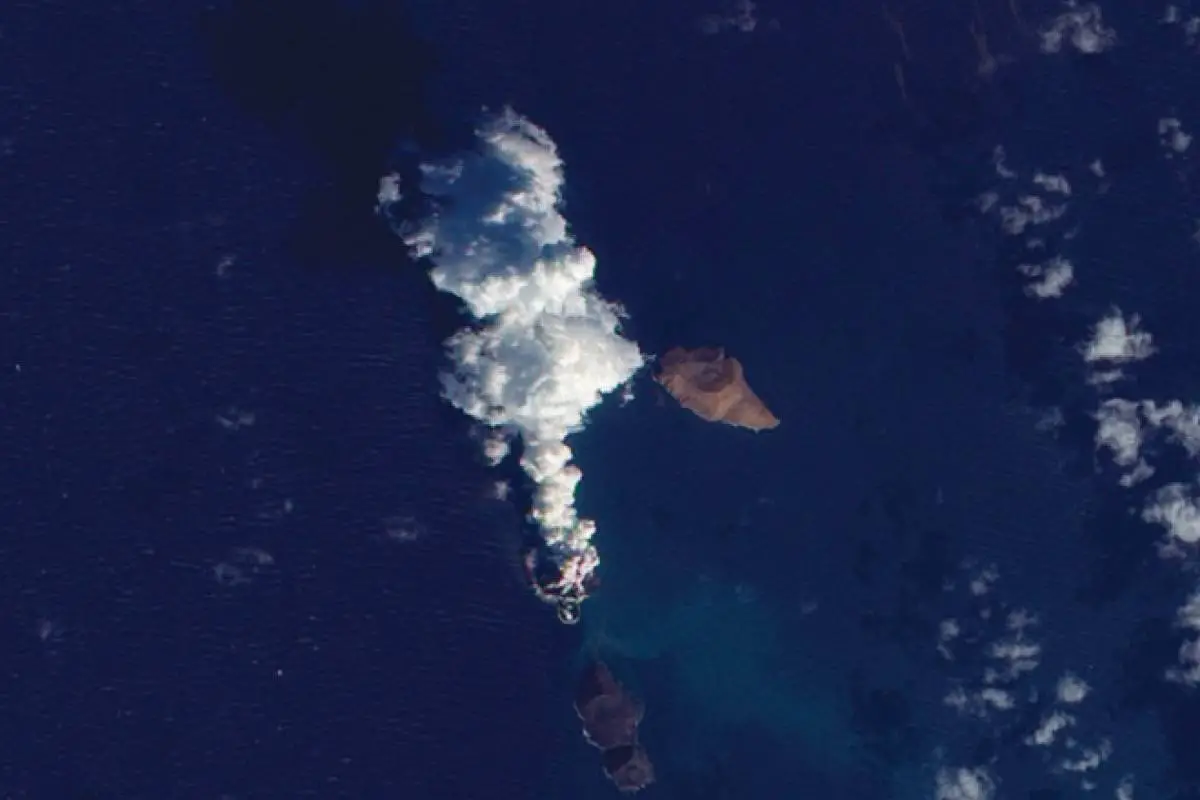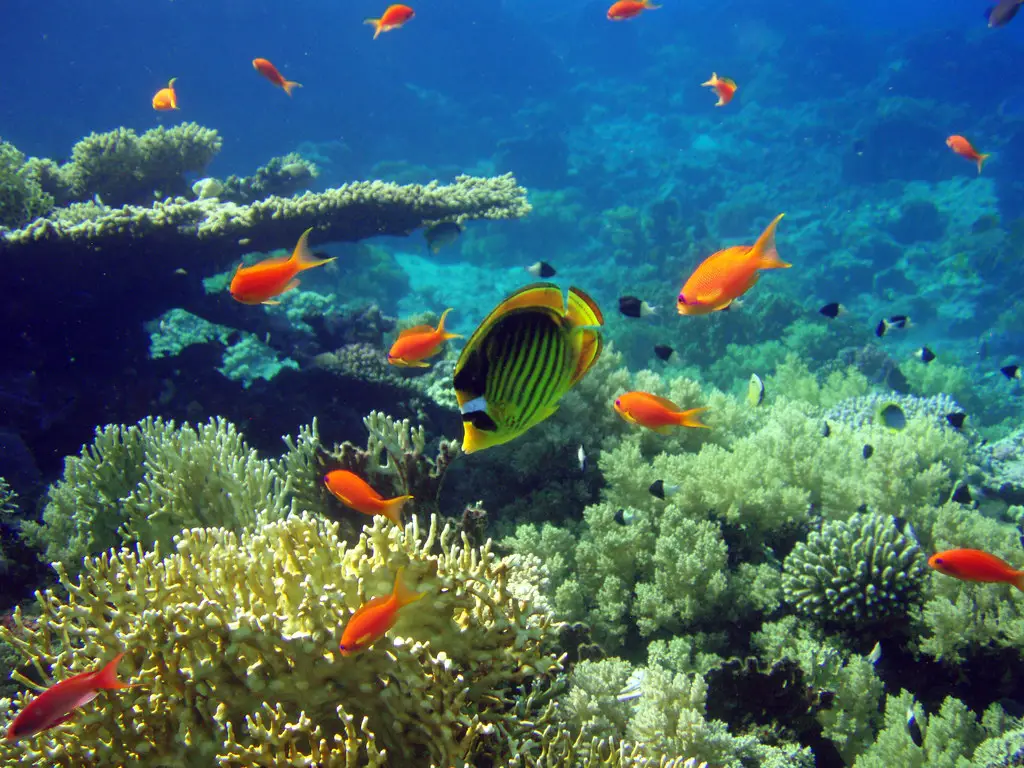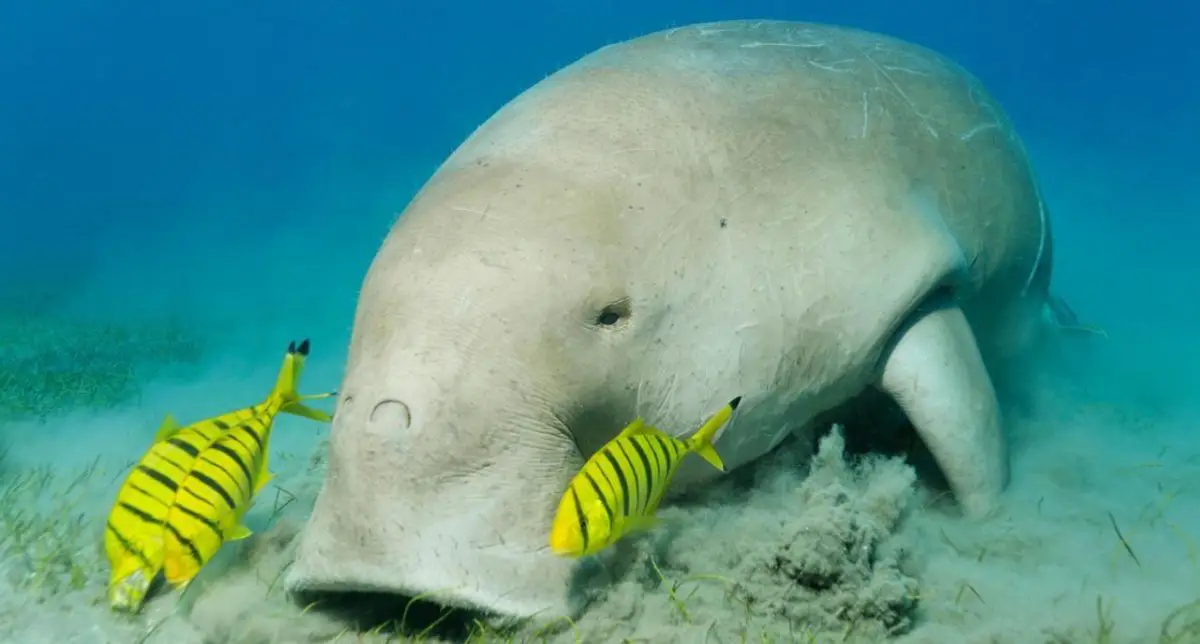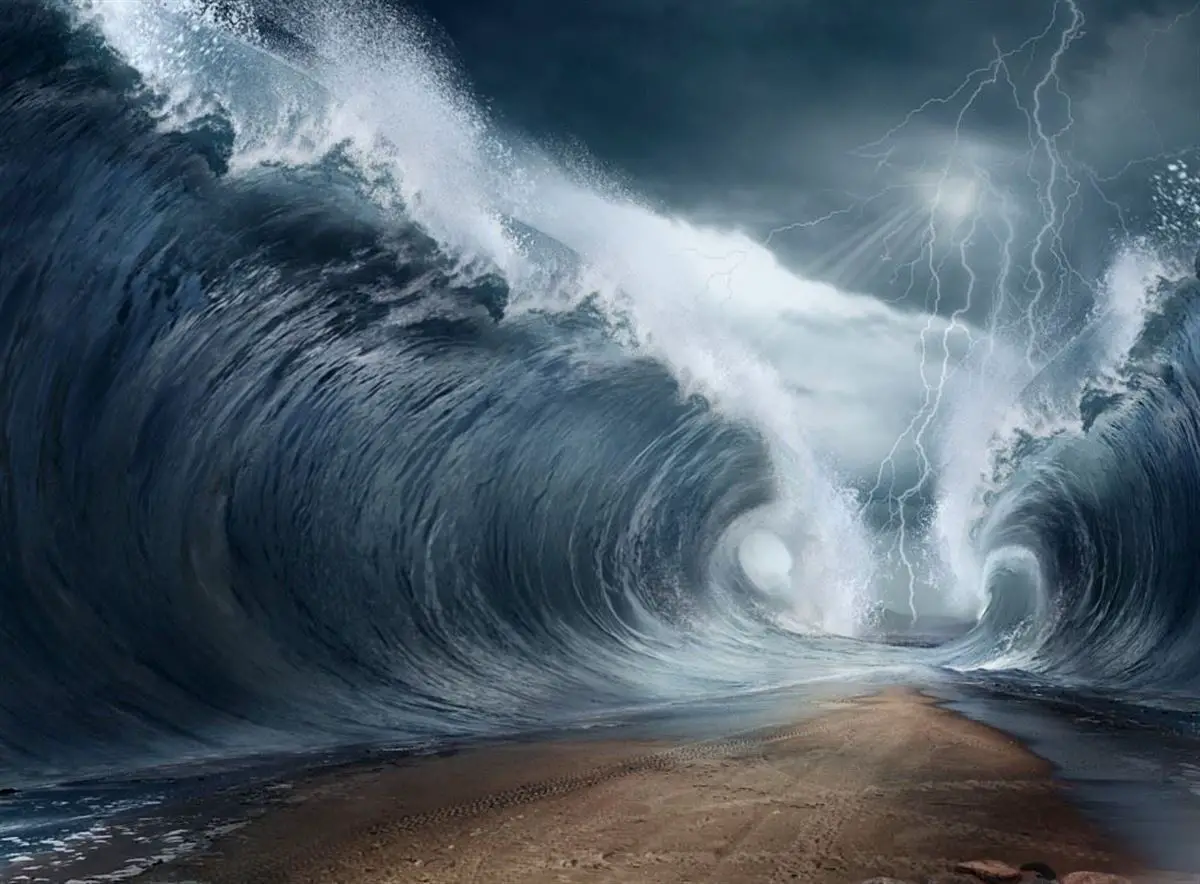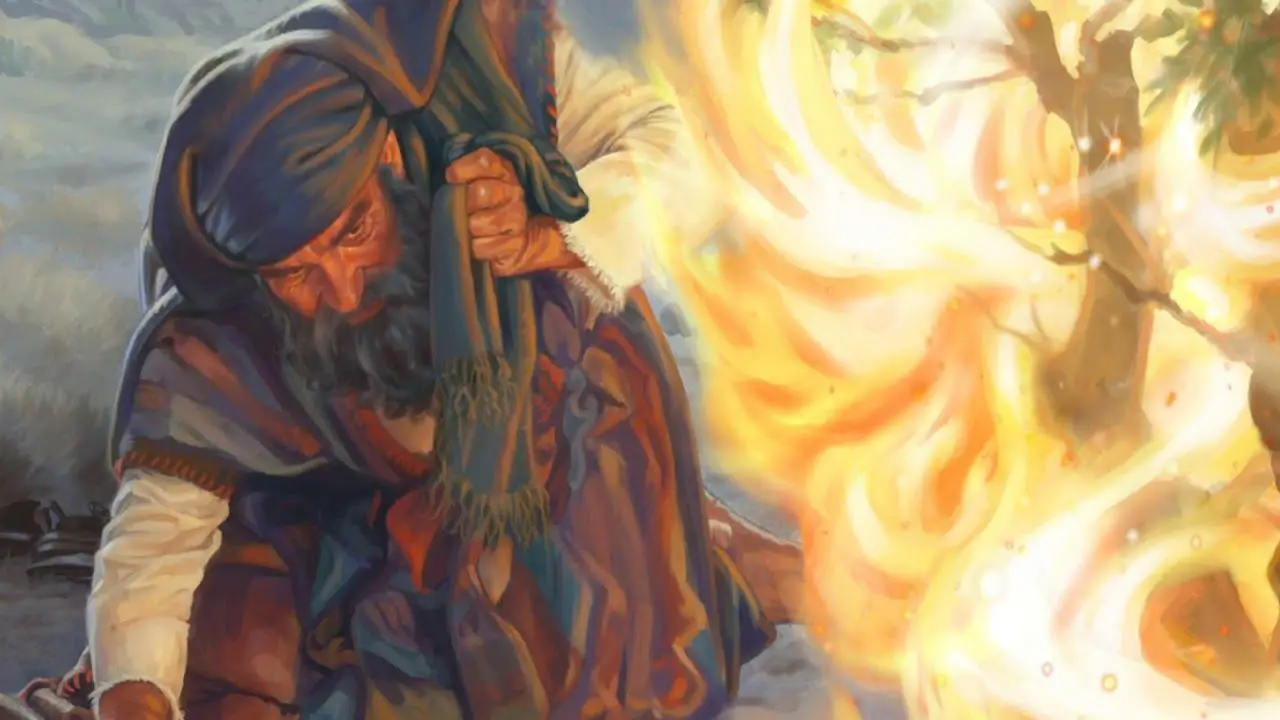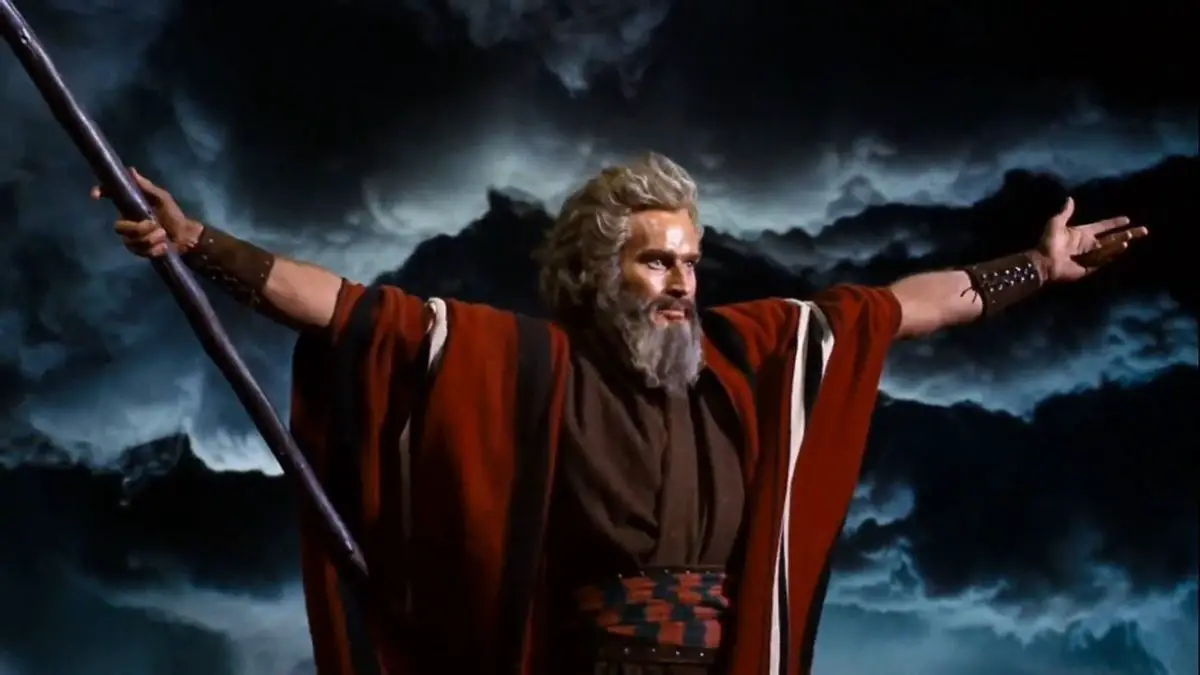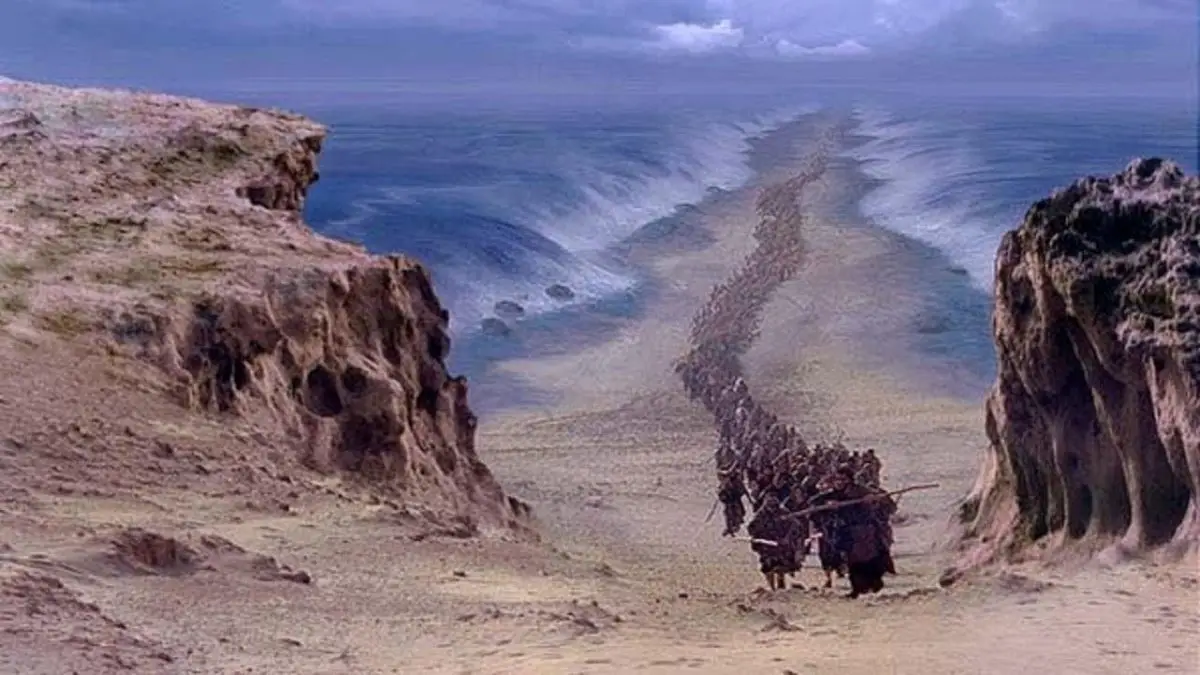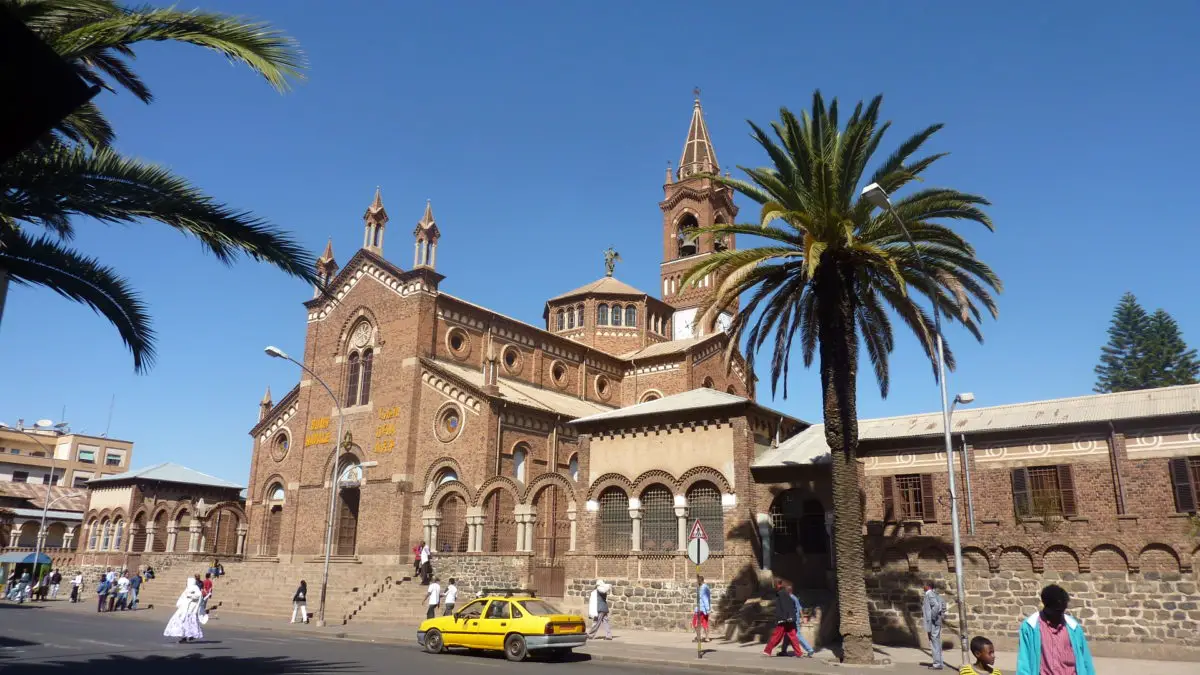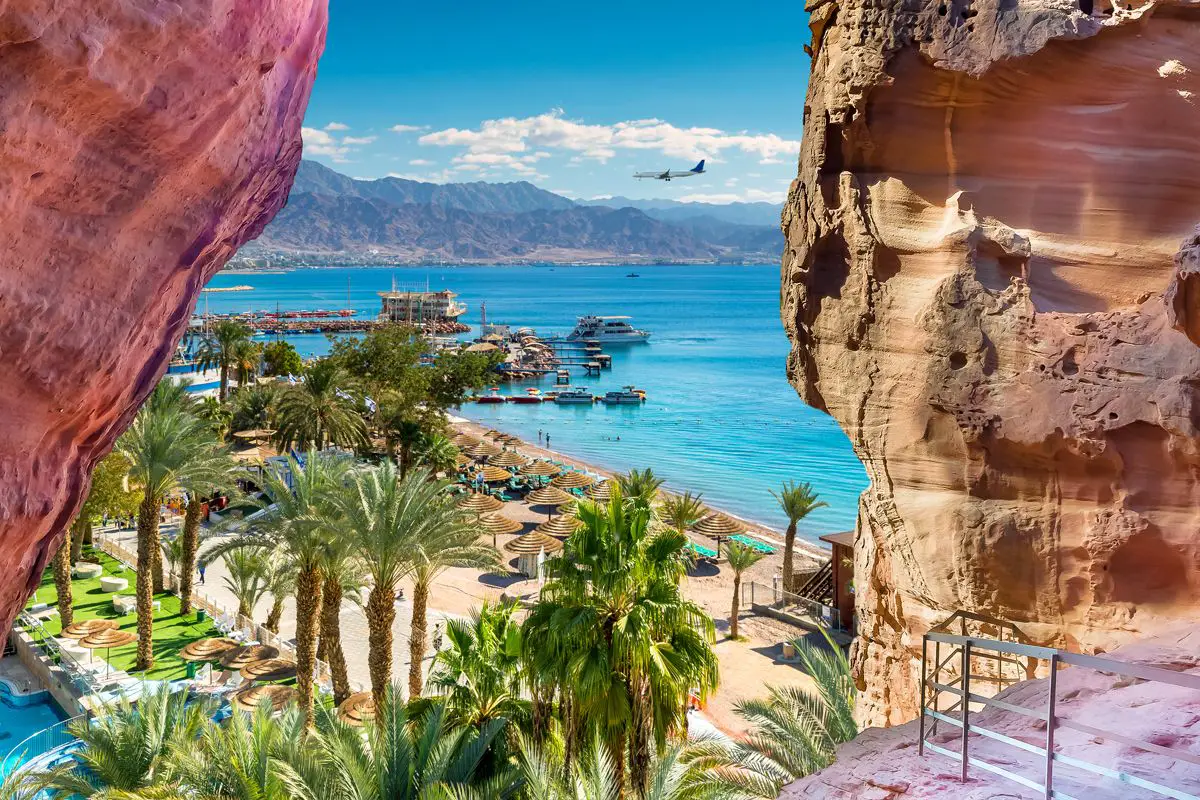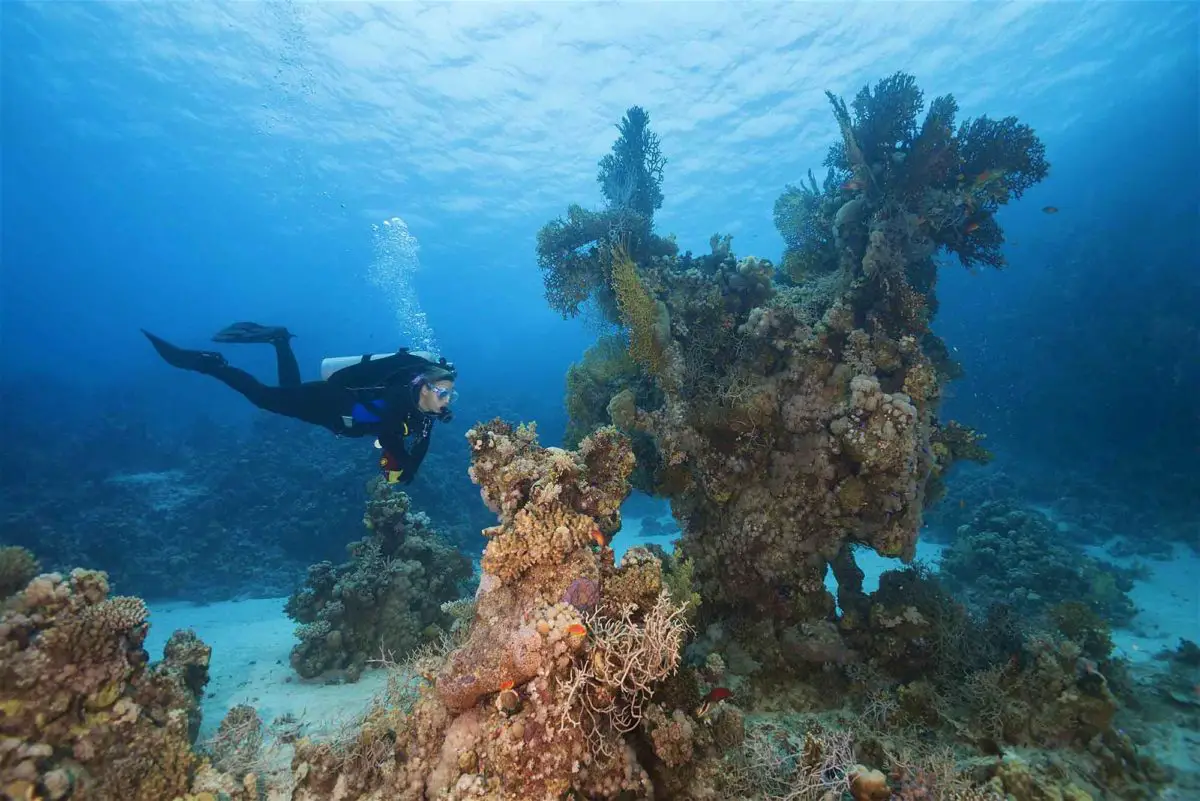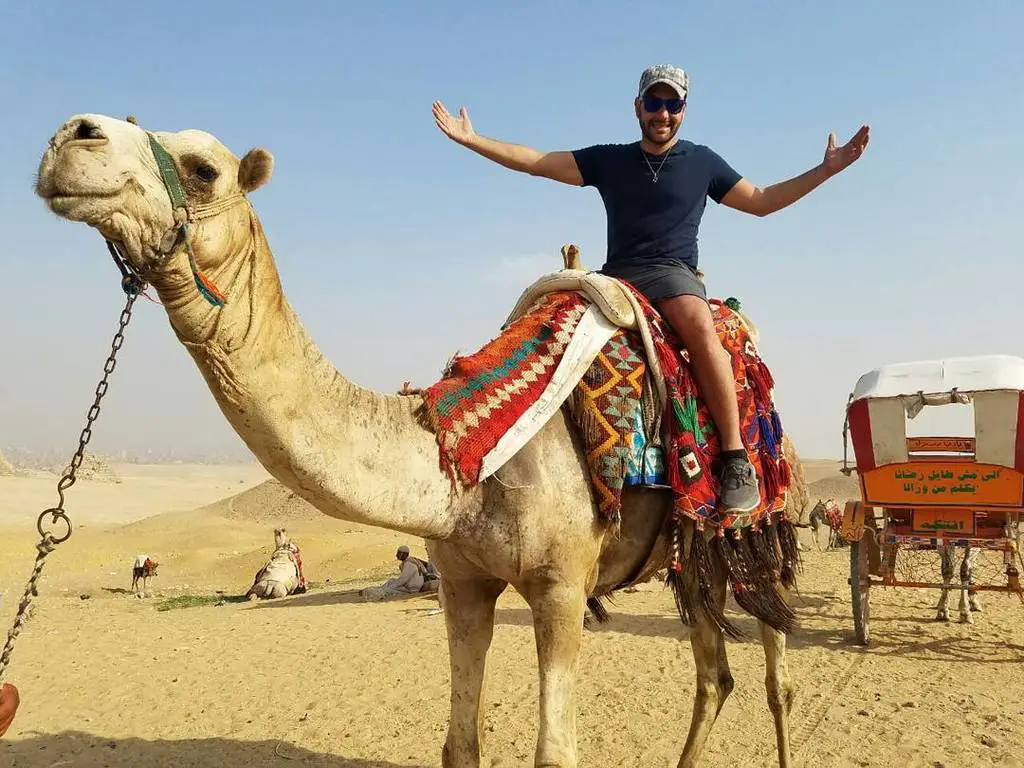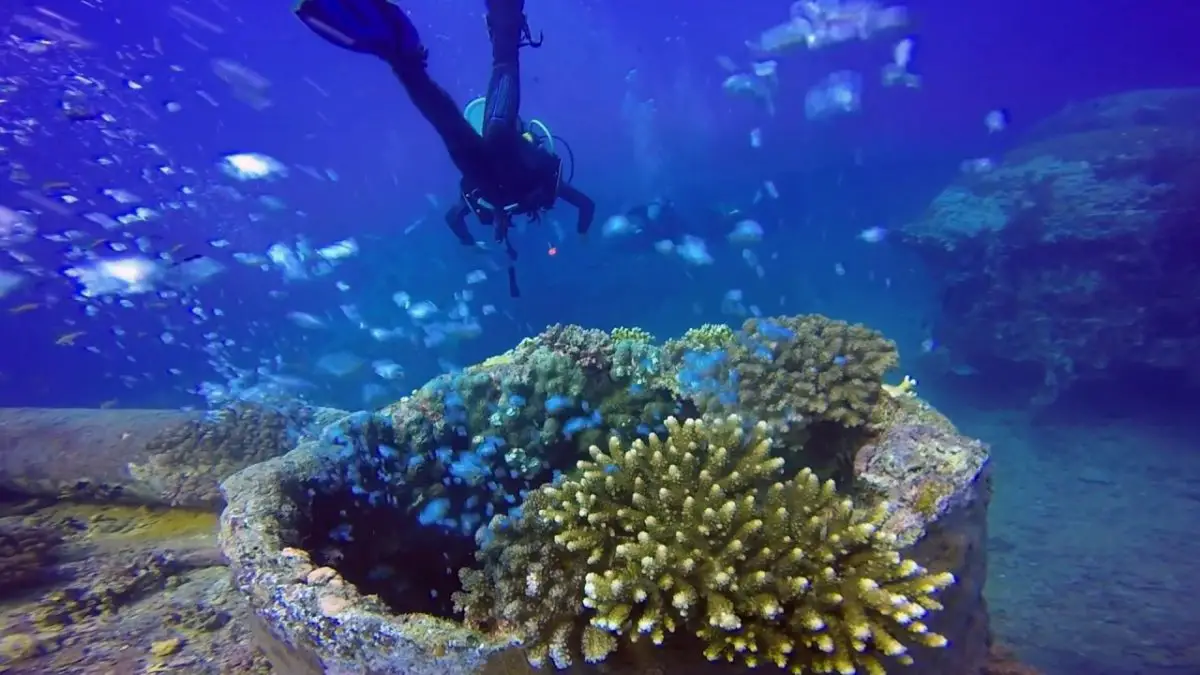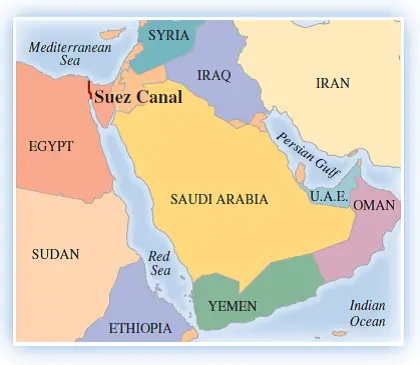With a biblical history, uncertain origins and constant change, the Red Sea is a truly interesting ecosystem, home to some of the world’s greatest coral diversity. Find out all about the Red Sea here.
Indice De Contenido
History of the Red Sea
The Red Sea lies to the south of the Sinai Peninsula, which is in the Middle East Asia region. Its coastline is distributed along seven countries, these are: Saudi Arabia, Israel, Yemen, Jordan, Egypt, Eritrea and Sudan. Initially, the only access to the Red Sea was through the Strait of Bab, now known as the Strait of Mandeb.
Today, however, it is also accessible through the Suez Canal, which is located in Egypt and connects the Red Sea to the Mediterranean Sea. Its waters also connect to the Indian Ocean through the Gulf of Aden, also known as the Gulf of Somalia.
The Suez Canal, built between 1859 and 1869, is 163 km long and connects Port Said and the Red Sea with Suez on the Mediterranean coast. Obviously, its construction contributed greatly to maritime trade between Europe and Asia, as it shortened the route by eliminating the need to go around Africa.
The Red Sea is mentioned in the Holy Scriptures, specifically in Exodus, when the people of Israel, led by Moses, crossed its waters on foot, but this biblical story will be discussed later.
Initially, the Red Sea was called the Arabian Gulf, due to the Greek origin of the name, which only referred to the waters south of Arabia, what is now known as the Indian Ocean. It was not until the early 20th century that the Arabian Sea began to be called the Red Sea.
Why is it called the Red Sea?
There are several explanations, some historical, others biological and even geographical, as to why the Red Sea was called the Arabian Sea, and there are written references, such as those of Herodotus (Greek geographer and historian who lived between 484 and 425 BC), which refer to the same sea.
It is said that the name Red Sea comes from the first tribes that populated the area, one of which was called the Himarites, whose name means red, these are the historical reasons for its name, although it was originally called Arabian. As for the biological reasons, they point out that at certain times of the year the sea takes on a red colour on its surface due to the growth of certain cyanobacteria.
According to some scientists, the growth or bloom of Trichodesmium erythraeum is responsible for the colour. This is a unique cyanobacterium, visible to the naked eye, also known as the sawdust of the sea, which lives in large colonies, is mobile, fixes nitrogen and also carries out the process of photosynthesis. It is believed that the red colour of the sea is caused by the blooming of this peculiar species.
The Red Sea is also said to take its name from the mountains near its waters, which are characteristically rich in minerals that flow into the Red Sea, reflecting its colour and giving it its reddish appearance.
There is visual evidence of this sea taken from the high part of the western side, on the border between Israel and Egypt, at sunset, when its waters are perceived as red because they act as a mirror, reflecting the reddish desert mountains on the eastern side.
In the same way, the geographical basis is based on the fact that the Asians, since ancient times, have used colour codes to define places, so they introduced the colour red to refer to orientation “towards the south”, while black was used to refer to orientation “towards the north”.
In addition to its history and the origin of its name, the Red Sea is of great economic importance today. The Strait of Bab el Mandeb is a maritime checkpoint and a strategic link between the Indian Ocean and the Mediterranean.
A considerable amount of the world’s shipping passes through the strait, while the Suez Canal is one of Egypt’s main sources of income. Also in the Red Sea waters are the ports of Aqaba in Jordan and Jeddah in Saudi Arabia, which manage the development of more than 200 kilometres of coastline and the construction of micro-islands in the Red Sea.
There is also an Egyptian-Saudi plan to build a bridge across this sea, which will of course facilitate the movement of goods between the two countries and bring trade between the Arabian Peninsula and Europe closer.
At present, as we can see, there is a great deal of regional interest in the Red Sea, but not only that, there is also the involvement and interest of non-regional actors, whose relations create conflicts between them and the countries that lie along its coastline, making this sea an ideal terrain for formal and informal assistance in the political, economic and security fields.
Formation
There are several theories that attempt to explain the formation of the Red Sea, but even today the age of the Red Sea is still unknown. Some scientists believe that the Red Sea was formed more than 20 million years ago when the earth’s crust began to weaken, creating a rift in Africa.
Then, due to tectonic movements that lifted deeper parts of the crust, volcanoes erupted, causing new mountains to rise, and water began to widen the rift, forming the Red Sea.
https://www.youtube.com/watch?v=5KLrC6ZO3ak
Another theory to explain the formation of the Red Sea is based on an even older time, 55 million years ago, when the supercontinent began to separate. This split created the African continent and, of course, the Arabian Peninsula.
Like the theory above, it is thought that the great rift began to fill with water and grew larger and larger. Both theories, as we can see, coincide in the formation of a rift in the Earth’s crust when the continents began to separate.
If we analyse the geological periods and the occurrence of the crustal movements, we can see that they may have started in the Eocene, and that the opening of the rift occurred earlier, during the Oligocene, while in the Tertiary period there was a closure towards the south, giving rise to the Bar Strait, known as the Mandeb.
In summary, it is very likely that the continental break occurred during the Eocene, and expanded much more rapidly during the Oligocene. Then, in the Tertiary period, the land closed to the south and the strait of Mandeb was formed. This strait connects the Red Sea on the northern side with the Gulf of Aden in the Indian Ocean on the southern side.
Red Sea characteristics
The Red Sea is tropical in character and lies between Africa and the Arabian Peninsula. It is bordered to the north by the Sinai Peninsula, the Gulf of Aqaba and the Gulf of Suez, and to the south by the Gulf of Aden. The shape of the Red Sea is elongated and narrow, hence the hypothesis that it was formed by a crack in the earth’s crust.
It has an area of about 438,000 km², is 2,250 kilometres long and 355 kilometres wide. It has an average depth of 3,000 metres at its deepest point, while its average depth is 490 metres. It is estimated that the water level in the Red Sea rises by more than 1.2 centimetres per year, so it is logical to expect it to increase in size over the years.
The surface temperature of the Red Sea varies between 26°C and 30°C in summer, while in winter it does not vary by more than 2°C. The Red Sea has no tributaries flowing into it. The Red Sea has no tributaries flowing into it.
The Red Sea has a high salinity, which is a result of the low rainfall in the region and high evaporation rates, coupled with the fact that there are no rivers flowing into the Red Sea.
The high salinity makes the water crystal clear and blue, allowing large coral colonies to form and visibility to 200 metres. There are strong winds and unpredictable currents.
Volcanic activity
Volcanic activity in the Red Sea is currently expected, as tectonic activity in the East African region and spreading processes that have moved Africa away from Saudi Arabia gave rise to the Red Sea. In this sense, the African tectonic plate is actively dividing and a new spreading centre may well be developing along the East African Rift.
As the continental crust spreads, stress cracks appear in the Earth’s surface, allowing magma to rise and flow through the cracks, which become wider and wider, increasing the likelihood of eruptions and volcanoes.
This effect continues today and the Red Sea is gradually widening and volcanic activity is developing in its deepest areas. In 2011, volcanic activity in the Red Sea was shown to have created a new island.
Images from a NASA satellite showed a land mass where there had been only seawater. The dates of the discovery of the new island coincide with reports from local fishermen of lava eruptions in the area.
Environmental features also suggest that the new island is the result of past volcanic activity, as high levels of sulphur dioxide have been recorded.
Climate
In the Sinai Peninsula, north of the Red Sea, the climate is characteristically warm Mediterranean, meaning that summers are very hot but winters are cool and wet. Further south, temperatures rise considerably, with winters even offering clear skies and pleasant temperatures.
To better understand the climate, it is necessary to divide the Red Sea into north and south, as it changes significantly depending on the area. Temperatures range from 22°C to 35°C, with the hottest months between May and September and the coolest months between November and January.
Rainfall on the northern coast has a Mediterranean tendency, but it is scarce and occurs mainly in winter, with the months with the highest probability of rainfall being between November and February.
The Red Sea coast has a desert-like climate with almost no rainfall, but low thermal variability and high humidity. In summer, the days are hot, but in the evening the temperature rises and the humidity falls.
In the central-southern part of the Red Sea coast, the sea temperature is slightly higher in winter, and with increasing altitude the climate becomes cooler, which can occur in the higher areas of Sinai, where night frosts can even occur.
Winds in Egypt are light, but in April and June the famous Jamsin winds can be present, with hot, dry gusts that cause sandstorms.
Flora and Fauna
The Red Sea is world famous for its crystal clear waters and diverse coral reefs, which support a rich ecosystem of aquatic flora and fauna. In fact, the biodiversity associated with the Red Sea exceeds that of the Indian Ocean.
It has a high number of endemic species, making it an extremely important ecosystem for the planet, as these species are exclusive to the Red Sea. The coral biodiversity is really important, in these large colonies we can find Anthelia glauca, a beautiful soft coral characterised by large polyps that develop in cold areas and are typical of the Red Sea and the western Indian Ocean.
Acropora pharaonis is a species of coral that lives in large colonies of flat, table-like structures that are very symmetrical and ordered. There are many species of coral, so many that they can be seen along the coastline for more than 2,000km. This important coral formation supports many other associated species, such as those described below:
- Mulloidichthys vanicolensis is a fish of the family Mullidae and is widely distributed from the Red Sea to southern Japan.
Ancylomenes is a genus of shrimp that can grow up to 22 cm in length.
Hippocampus fuscus, better known as seahorses, are specifically associated with gorgonian corals of the genus Muricella and are particularly vulnerable due to their reduced habitat.
Halichoeres hortulanus, a widely distributed fish, plays an important role in the balance of the coral reef.
The elegant green turtle, whose scientific name is Chelonia mydas, is a large animal that can weigh more than 230 kilograms, is heavily hunted and is currently listed as an endangered species.
The Red Sea is also home to the leatherback turtle Dermochelys coriacea and the hawksbill turtle Eretmochelys imbricata.
https://www.youtube.com/watch?v=FFSQLXgHRH8
Approximately 400 species of coral have been identified in the Red Sea, 32 of which are endemic to the Red Sea. There are also more than 1,200 species of fish, including the white-tipped shark and the lionfish, in addition to those already mentioned. The not-so-graceful moray eel and the angelfish are other inhabitants of this diverse sea.
Giant clams are one of the most impressive molluscs found in association with the coral reef. The abundant seagrass beds are the perfect habitat for the dugong, a peaceful, algae-eating herbivore and the only survivor of the Dugongidae family, which includes the manatees.
This species is the smallest of the sirenians, resembling manatees but living in warm, salty waters, preferably solitary and slow swimmers.
The seabed of the Red Sea is covered with sea grasses and seagrass meadows, where these strange and rare animals find abundant food. Mangroves are part of the flora that colonises the shores of the Red Sea, in addition to the red algae described above, which are responsible for the colour of the water.
The Red Sea and the Bible
There is a sacred story associated with the Red Sea, recorded in the Book of Exodus, which tells how Moses, on his mission to deliver the people of Israel from the Egyptians, led them to the Red Sea and, anointed with the power of God, parted its waters so that the people could cross and escape the certain death that awaited them at the hands of Pharaoh and the Egyptians.
Moses was chosen by God to lead the Israelites into Canaan, God’s promised land. Remember that the Bible tells us that after the tenth plague of Egypt, Pharaoh allowed the Israelites to leave Egypt. At least 600,000 people, including Israelite men, women and children, left, accompanied by other groups of people who also believed in Jehovah.
They took with them what little they had, such as their sheep, goats and cattle, as they left Egypt. After walking for several days, they came to the Red Sea, where they took a much-needed rest. But Pharaoh, filled with hatred and anger, regretted having let the Israelites go, so he changed his mind and ordered everything to be prepared to pursue them.
Facing the Red Sea and knowing they were being pursued, the Israelites saw no way out but to drown or die at the hands of Pharaoh’s men. Then God called Moses and asked for his faith, telling him to stretch out his hands over the water and a great flash of lightning parted the Red Sea, opening a channel for the Israelites to cross. When Pharaoh’s army tried to pursue them, the waters of the sea began to close, destroying Pharaoh and his army.
The following is a summary of the book of Exodus, in which chapter 14, from verse 1 to verse 31, recounts in detail the biblical story associated with and occurring at the Red Sea:
In the sacred word of Exodus, corresponding to verses 1 to 4, it is written that Jesus addressed Moses to speak to his children of the people of Israel, so that they all encamp at Pi-hahiroth, between Migdol and the sea, towards Baal-zephon, an area that lies by the Red Sea.
This passage clearly shows Pharaoh’s anger towards the people of Israel and his desire for them to remain slaves, but what Pharaoh did not know was that his hatred and resentment was part of God’s plan. Verse 4 says implicitly:
“And I will harden Pharaoh’s heart to follow them; and I will be glorified in Pharaoh and in all his army, and the Egyptians will know that I am the Lord.
Verse 5-8 tells us that the army warned Pharaoh that the people of Israel were about to flee to the Promised Land, causing even Pharaoh’s servants to turn against the Lord’s people. Pharaoh, in his selfishness of thinking he was master of all, could not understand how he had allowed God’s people to stop serving him.
Then he decided to go after them, and with six hundred chariots and men of his army he hurried after them. God had hardened the heart of Pharaoh king of Egypt, but He had also given his children, the people of Israel, the strength to go on with Moses to the Promised Land. An extract from verse 8 reads:
“But the children of Israel had gone out with a mighty hand”.
Verse 9 tells how the Egyptians, who had pursued them relentlessly with their horses, chariots and a whole army, managed to catch up with them by the sea, at the place God had indicated to Moses. When the people of Israel saw the Egyptians in the distance, they were terrified and began to cry out to Jesus.
Verse 11 tells us that God’s people cried out to Moses and asked him if there were no graves in Egypt for them to come and die in the wilderness, and they did not understand why they should go on such a long journey when it was better for them to remain slaves of the Egyptians.
In an act of infinite faith, Moses turns to the people of Israel and literally says in verses 12 and 13:
“And Moses said unto the people, Fear not: stand fast, and see the deliverance which the LORD will work for you this day: for the Egyptians whom ye have seen this day, ye shall see them no more for ever. The Lord will fight for you, and you shall be at ease”.
But despite his words, Moses felt doubt and tried to understand how to save God’s people; his human mind could find no way out, with the mighty Red Sea in front of him and the Egyptians behind him. So he prayed earnestly for a solution, and then Jehovah said to Moses:
“Why do you cry out to me? Tell the children of Israel to go. Lift up your rod and stretch out your hand over the sea and divide it and let the children of Israel go into the middle of the dry sea”.
It was the very moment when Moses would give the greatest demonstration of the existence of God’s power, obeying His word, Moses lifted his rod and his arms, then the sea began to part its waters, at the same time as the Egyptians felt very close to reaching their goal and quickened their pace to catch up with the people of Israel.
God was sure that His glory was about to be accomplished and the Egyptians would know His true power. Verse 18 says
“And the Egyptians shall know that I am the LORD, when I shall glorify myself in Pharaoh, and in his chariots, and in his horsemen.
The Red Sea parted and the angel of God stood before his people. Moses stretched out his hands, and Jehovah used the east winds, also at his command, to dry up the sea and part the waters. So the people of Israel began to advance into the midst of the dry sea. The Egyptians also entered with their chariots, horsemen and army, the former led by a chosen one of God and the latter led by a false king.
But the Egyptians began to suffer the upheavals of the divine struggle, their chariots lost their wheels, their horses fell badly, then in verse 25 it says:
“And he took away the wheels of their chariots, and made them very wobbly. Then the Egyptians said, ‘Let us flee from Israel, for the Lord is fighting for them against the Egyptians'”.
It is at this point that God tells Moses to stretch out his hands again over the sea so that the water will cover the Egyptians, their chariots and their horsemen. It was already dawn and the sea was coming back with all its might, there was no escape.
“And the waters returned, and covered the chariots, and the horsemen, and all the host of Pharaoh that came after them into the sea; there was not a man left”, verse 28.
The children of Israel crossed the Red Sea, the waters of which were like great walls on either side of them; Jehovah had saved His people from certain death, and the people of Israel were able to see the death of the Egyptians. Verse 31:
” And Israel saw the great thing which the LORD did against the Egyptians; and the people feared the LORD, and believed the LORD and Moses his servant.
Christians say that the blood of the Egyptians coloured the sea red, hence its name. Many may doubt this biblical event, but there are now findings by archaeologists who were originally looking for the remains of sunken ships and boats in the Red Sea, but instead found a wealth of evidence and artefacts belonging to an Egyptian army from the 14th century BC. The location of the find is exactly at the bottom of the Gulf of Suez.
https://www.youtube.com/watch?v=IL9a_vKqj7w
Major coastal cities
As we have already mentioned, the Red Sea has a coastline that stretches across 7 countries, one of which is Egypt. The main coastal towns in Egypt are Safaga and Hurghada, both of which are recognised as important tourist centres. The city of Safaga, also known as Bur Safaga, is located about 60 kilometres from Hurghada.
Hurghada, on the other hand, was a fishing village at the beginning of the 20th century, but has experienced significant growth and development since the 1980s, becoming a city of great tourist development.
Like Hurghada, the city of Sharm el-Sheikh was originally a fishing village, but was later developed as an Egyptian naval base due to its important strategic location at the southern tip of the Sinai Peninsula, between the Red Sea coast and Mount Sinai.
The Eritrean region is also home to important cities such as Assab, which is well known for its tourism, but the city is also home to a refinery that serves local and Ethiopian needs.
The city of Massawa has a history of conquest due to its politically strategic location, which has made it the subject of colonisation attempts, such as in 1557 when the Ottoman Empire used it as a base to conquer Tigray.
The port of Sudan is the capital of Al-Bahr al-Ahmar and the only commercial port in the country. It is also known for its beautiful beaches with extensive coral reefs, which are a major tourist attraction.
In Israel, the city of Eliat is an important Israeli port on the Red Sea and a tourist centre with beautiful beaches and a lively nightlife that has made it a popular destination.
Finally, in Jordan is the city of Aqaba, which even has a biblical reference, as King Solomon built a port here that became his naval base. Today it is still a port area with an economy based on tourism, as it is a popular diving spot.
What to do in the Red Sea
The Red Sea has become an exceptional destination for water activities such as scuba diving, snorkelling, jet skiing, boat trips and more, but there are also many places that offer other types of activities to suit all tastes and expectations.
It is famous for its spectacular coral reefs, teeming with marine life and species only found in the Red Sea, making it a favourite spot for diving enthusiasts. Another alternative is Ras Mohammed and Rocky Island in Egypt, but if you prefer less crowded places, you can visit Sanganeb and Shaab Rumi in Sudan.
If you’re not a diving enthusiast and prefer to stay dry, you can take a trip to the coral reefs in boats with transparent decks so you can see the seabed all the way out.
Fishing is another way to enjoy the Red Sea, and there are plenty of fishing opportunities available from hotels and locals in the coastal towns along the Red Sea. At the end of the day and after enjoying the various water activities available in the Red Sea, there are the options associated with the city and nightlife, which are also very varied.
In fact, the Red Sea is more than just activities related to water sports and fun, there are wonderful places to visit in its coastal towns, one of them is undoubtedly Ain Sukhna, this is an ideal place to go out and explore the eastern desert and visit its historic monasteries, we must not forget that knowing the culture of the place we are visiting is a very important part of any trip.
Also in San Antonio, a town 90km from Ain Sukhna, you can visit a monastery that was built in 356 BC, it is the oldest monastery and very close to it is the monastery of St Paul, both monasteries are located in the beautiful Red Sea Mountains near Za’farana to the south.
You can also enjoy a safari in Hurghada where part of the journey is by motorbike and then by camel, you can experience the desert, taste the delicious food and even learn the sensual belly dance which is quite an experience. Back at the hotel, if you have any energy left, don’t forget to enjoy the dynamic nightlife.
Diving
In the Red Sea you will find countless diving opportunities, you don’t have to be an expert diver, even beginners can enjoy this unique and unforgettable experience. We must remember that the Red Sea has more than two hundred species of coral, so you must leave your fears behind and embark on an adventure that has become a very safe experience thanks to the experience of its inhabitants and diving experts.
There are places for beginners and also for the most experienced divers, without a doubt it is an experience worth trying. The dive sites are very varied, but the best recommendations include Taba, Giftun Islands, Ras Mohammed National Park and Hurghada.
Diving in the Red Sea is possible all year round and its crystal clear, warm waters are truly inviting. Towns are ready to offer the best service and advice to help you enjoy the experience. There are packages that organise diving cruises with several dives a day at different sites and also night dives.
Diving in the Red Sea allows you to interact with amazing species such as the gentle whale shark and raise awareness about their conservation. The northern coasts are generally the most visited. Finally, we can highlight Shark Reef, which allows you to see one of the most curious shipwrecks, corresponding to a boat full of toilets and sinkholes, which are now home to a number of species such as jacks, tuna and manta rays.
Red Sea Map and Location
The following map shows the distribution of the coasts of the Red Sea, as well as its shape, surface area and the straits that allow contact with the Mediterranean Sea and the Indian Ocean.
If you enjoyed this article, we invite you to learn more about other incredible ecosystems by following the links below:
- River Chillar
- River Narcea
- River CadaguaRío Cadagua

